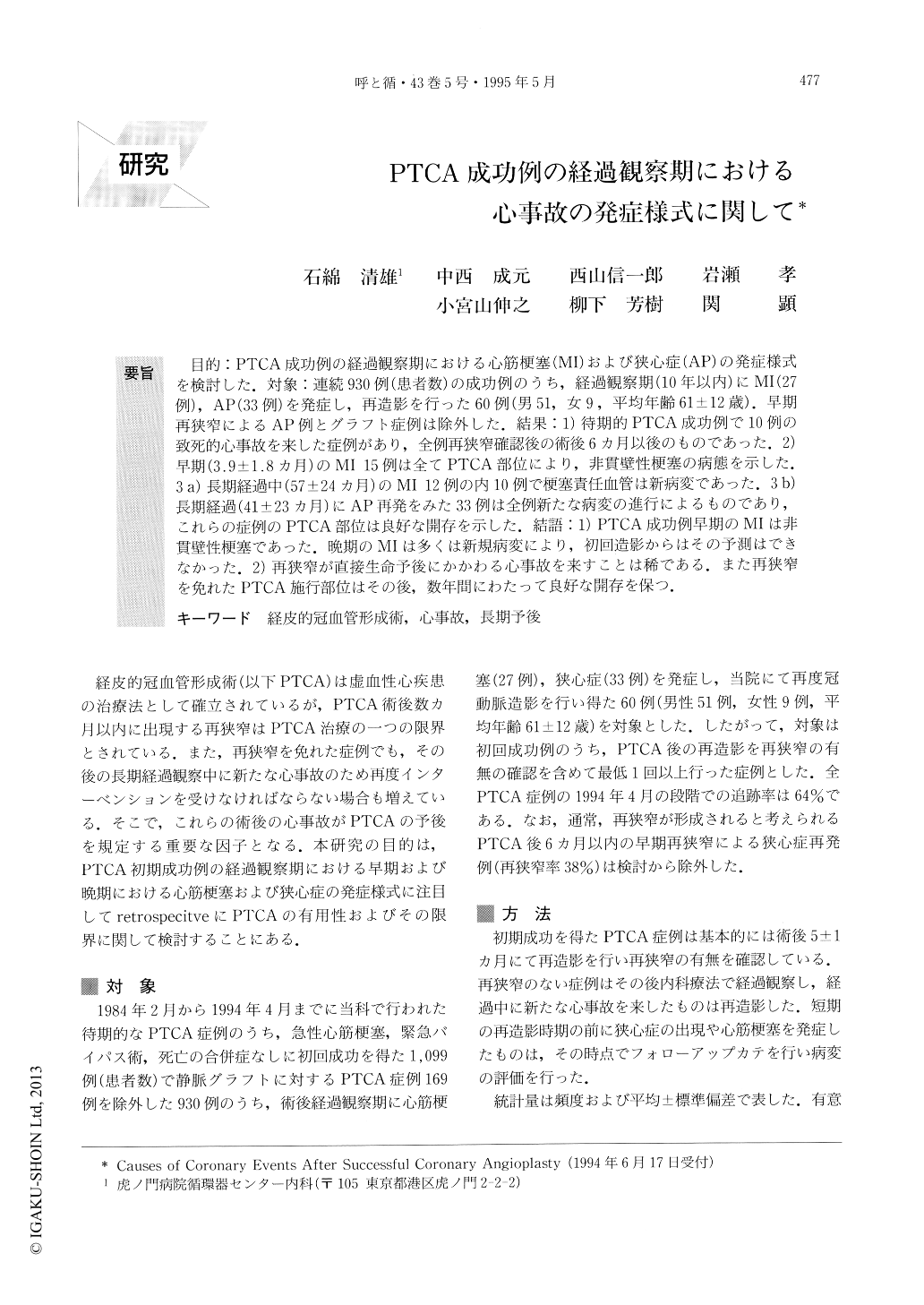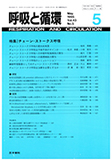Japanese
English
- 有料閲覧
- Abstract 文献概要
- 1ページ目 Look Inside
目的:PTCA成功例の経過観察期における心筋梗塞(MI)および狭心症(AP)の発症様式を検討した.対象:連続930例(患者数)の成功例のうち,経過観察期(10年以内)にMI(27例),AP(33例)を発症し,再造影を行った60例(男51,女9,平均年齢61±12歳).早期再狭窄によるAP例とグラフト症例は除外した.結果:1)待期的PTCA成功例で10例の致死的心事故を来した症例があり,全例再狭窄確認後の術後6カ月以後のものであった.2)早期(3.9±1.8カ月)のMI15例は全てPTCA部位により,非貫壁性梗塞の病態を示した.3a)長期経過中(57±24カ月)のMI12例の内10例で梗塞責任血管は新病変であった.3b)長期経過(41±23カ月)にAP再発をみた33例は全例新たな病変の進行によるものであり,これらの症例のPTCA部位は良好な開存を示した.結語:1) PTCA成功例早期のMIは非貫壁性梗塞であった.晩期のMIは多くは新規病変により,初回造影からはその予測はできなかった.2)再狭窄が直接生命予後にかかわる心事故を来すことは稀である.また再狭窄を免れたPTCA施行部位はその後,数年間にわたって良好な開存を保つ.
To determine the causes and incidence of coronary events after successful coronary angioplasty, we evaluated follow-up angiograms retrospectively from 60 patients (27 with myocardial infarction and 33 with new onset angina pectoris) with coronary events. These 60 patients were selected from among 930 consec-utive patients undergoing successful elective angioplas-ty between February 1984 and April 1994. Follow-up ratio was 64%. All patients had undergone follow -up catheterization two or more times. In this study, we excluded cases whose angina pectoris was due to short -term restenosis or to coronary artery bypass grafting.There were ten cases with fatal cardiac events during the period of follow-up reevaluation to confirm the presence of restenosis. All patients (n=15) with short -term (3.9±1.8 months) restenosis had non-Q wave infarction due to severe restenosis of the dilated site, which was a nonfatal complication. In contrast, except for two cases, culprit lesions in late onset coronary events in cases without short-term restenosis (n=45) were at undilated sites that were previously nonob-structive. These findings indicate that prexisting obstructive coronary lesions are not a future infarct site. Furthermore, previous dilated sites also showed long-term good patency (41 ± 23 months). We con-cluded that restenosis is unavoidable, however fatal complications due to restenosis are very rare. PTCA is particularly valuble in patients who do not develop restenosis after initial procedures, because of the long-term sustained efficacy of lesion dilatation. However, some patients developed new lesions at nondilated sites during long-term follow-up, so careful observation is needed.

Copyright © 1995, Igaku-Shoin Ltd. All rights reserved.


